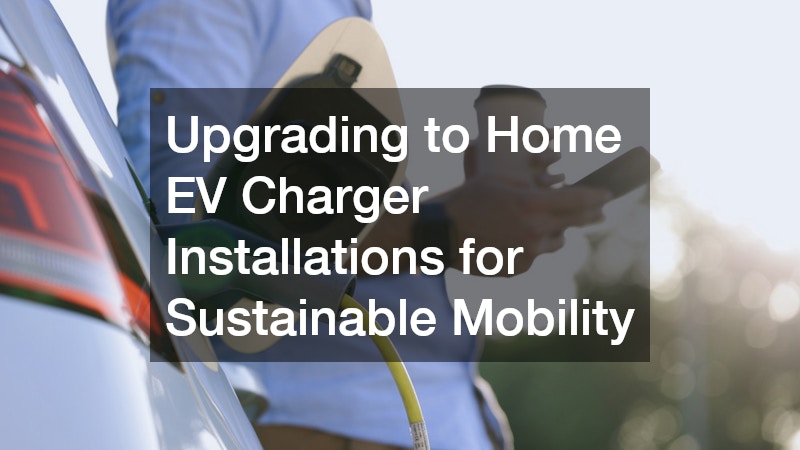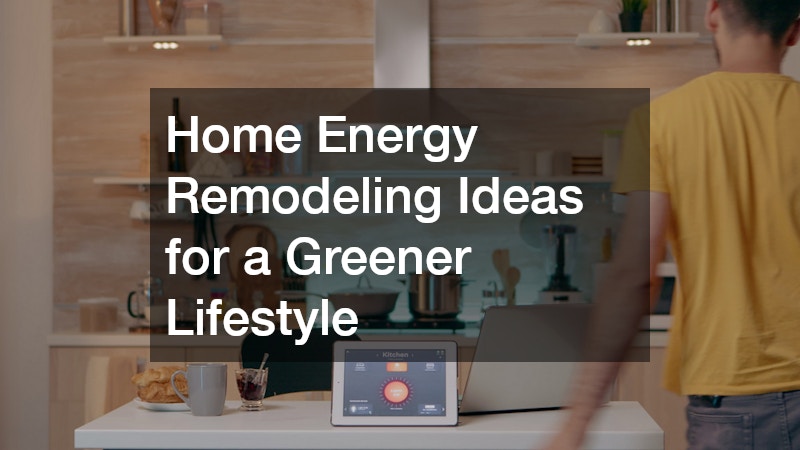Introduction
The importance of energy-efficient home remodeling has been rising significantly in the U.S. Homeowners are becoming increasingly aware of the environmental and financial benefits that come with such remodels. Energy-efficient solutions not only help in reducing utility bills but also contribute to lowering a home’s carbon footprint and boosting its overall value.
Investing in eco-friendly remodeling activities addresses both immediate needs and long-term benefits. By adopting greener lifestyles, individuals are helping the planet while also ensuring substantial savings on energy costs. Furthermore, these choices improve the property’s marketability, making it a prudent investment for future resale.
This article will discuss several specific upgrades like home EV charger installations, insulation, interior painting, roofing, and many others that can convert an ordinary home into an energy-smart residence. Such transformation supports sustainable living by weaving together efficiency, comfort, and long-term value for U.S. homeowners.
As technology evolves and sustainable materials become more accessible, even average homeowners can achieve significant results with small adjustments. From lighting upgrades handled by a residential electrician to structure building with efficient materials, every improvement adds cumulative impact. Whether through installing generators for renewable backup energy or choosing natural stones for durability and insulation, today’s remodeling choices define tomorrow’s eco-friendly homes.
Upgrading to Home EV Charger Installations for Sustainable Mobility

In recent years, electric vehicles (EVs) have surged in popularity across the U.S. One of the appeals of EV ownership is the convenience brought by home EV charger installations. Having a personal charging station at home effortlessly integrates sustainable mobility into daily life while promising significant savings.
Charging options typically come in Level 1 and Level 2 variants, each with different energy implications. Level 1 chargers are slower and utilize a standard home outlet, whereas Level 2 chargers, requiring specific installations, recharge vehicles faster. More efficient home EV charger installations enable quicker, easier, and ultimately more sustainable vehicle usage.
The U.S. Department of Energy offers various tax incentives and energy credits for those opting to install home EV charger installations. Homeowners benefit from reduced vehicle emissions and boost their property’s market value, enhancing energy independence and supporting a cleaner environment.
Furthermore, when integrated with renewable energy systems, such as solar panels, these chargers can operate entirely on green energy. Many homeowners also coordinate with a residential electrician to ensure installations are safe, energy-efficient, and compliant with code requirements. Over time, this investment helps decrease reliance on fossil fuels while promoting cleaner air quality nationwide.
Smart Home Remodeling Choices for Energy Efficiency
Strategic decisions in home remodeling can significantly save energy and increase efficiency. Upgrading outdated systems such as HVAC units, windows, and insulation are exemplary interventions. Each of these updates plays a critical role in promoting greener, energy-conscious living.
U.S. statistics indicate significant household energy consumption that can be reduced through efficient remodeling practices. According to the U.S. Energy Information Administration (EIA), heating and cooling account for nearly 43% of a home’s energy use. Smart remodeling—using energy-efficient materials and methods—can lower that figure dramatically.
Energy-efficient materials and appliances often qualify for rebates and incentives, motivating homeowners to make meaningful upgrades. Home remodeling that integrates eco-conscious roofing materials, smart thermostats, and high-quality insulation ensures sustained comfort with reduced monthly expenses.
Additionally, hiring licensed professionals such as a residential electrician can ensure the integration of smart lighting systems or EV-ready wiring. By taking a whole-home approach to energy efficiency, every remodeling decision—from structure building to interior finishes—contributes to long-term sustainability.
Enhancing Efficiency with Energy-Smart Home Siding Installation
Choosing the right siding for your home can significantly impact insulation and temperature control. Energy-efficient home siding installation using materials like insulated vinyl, fiber cement, or engineered wood enhances a building’s thermal resistance (R-value), directly contributing to lower energy bills.
Insulated siding helps reduce air leaks, minimizing heat loss in winter and heat gain in summer. According to the U.S. Department of Energy, high-performance siding can cut heating and cooling costs by up to 20%. For homes located in regions with fluctuating temperatures, this upgrade provides consistent comfort year-round.
When planning a home siding installation, homeowners should also consider weather durability, moisture resistance, and sustainability. Fiber cement siding, for example, offers excellent longevity and can mimic natural materials like wood while requiring minimal maintenance. These advantages make it ideal for long-term energy efficiency and visual appeal.
Combining new siding with other home remodeling strategies—like upgraded roofing or energy-efficient windows—ensures that the entire building envelope supports eco-friendly living. The investment delivers financial returns while lowering environmental impact.
The Role of Eco-Friendly Interior Painting in Energy Optimization

The choice of materials used in interior painting can significantly influence indoor air quality and energy performance. Low-VOC and zero-VOC paints are particularly beneficial, as they emit fewer harmful chemicals, promoting healthier air while aligning perfectly with sustainable remodeling goals.
Color selection also plays a role in energy efficiency. Lighter paint shades reflect more sunlight, keeping interiors cooler and reducing reliance on air conditioning. This passive energy-saving technique complements other efficiency measures like insulation and efficient roofing.
For U.S. homeowners seeking long-term results, high-quality eco-friendly paints last longer and require fewer touch-ups. When combined with well-insulated walls and properly sealed windows, interior painting projects can contribute to both beauty and efficiency.
Collaborating with a professional residential electrician to ensure proper lighting installation further enhances the effect. The combination of reflective paint, smart lighting systems, and natural daylight management creates balanced illumination that reduces overall energy consumption.
Partnering with a Residential Electrician for Energy-Efficient Systems
Updating electrical systems is crucial for enhancing both safety and energy efficiency. Engaging a residential electrician to install systems such as LED lighting, programmable thermostats, and smart home panels helps reduce wasted energy and enhances comfort.
Modern electrical solutions significantly cut energy usage through improved technology. LED bulbs consume up to 75% less energy than incandescent ones, while smart thermostats can save homeowners around $180 annually, according to the U.S. Department of Energy.
A skilled residential electrician can also integrate systems that support home EV charger installations, backup generators, or solar power setups. This cohesive approach ensures that all home components work together efficiently.
Regular electrical audits further help detect inefficiencies and potential hazards. Combining professional expertise with energy-efficient upgrades ensures a safer, more sustainable household that performs optimally year-round.
Using Natural Stones to Balance Aesthetics and Thermal Efficiency
Materials like granite, marble, and limestone aren’t just beautiful—they’re thermally efficient, helping regulate indoor temperatures naturally. Using natural stones in home remodeling adds long-term energy performance while reducing dependence on synthetic materials.
Natural stones absorb heat during the day and release it slowly at night, helping maintain comfortable indoor climates. This makes them an ideal choice for sustainable flooring, countertops, and wall finishes. Additionally, these materials are low-maintenance and incredibly durable, reducing replacement needs over time.
The U.S. Green Building Council encourages the use of responsibly sourced materials to minimize environmental impact. Incorporating natural stones into remodeling projects complements efficient home siding installation or roofing improvements, contributing to both form and function.
Pairing natural materials with energy-efficient lighting and insulation enhances a home’s eco-friendly profile while adding lasting value and timeless appeal.
Incorporating Domed Ceilings for Energy Flow and Light Management
Architectural elements like domed ceilings add elegance while enhancing light distribution and airflow. These designs amplify natural light, reduce shadows, and help regulate temperature by improving air circulation.
Homes with domed ceiling structures often experience more even heating and cooling. This means HVAC systems don’t need to work as hard, lowering energy consumption and maintenance costs. Combined with smart structure building techniques, the effect can be remarkable.
Natural daylight streaming through skylights or dome openings also reduces the need for artificial lighting during the day. When paired with eco-friendly interior painting and proper insulation, the energy savings multiply.
Innovative architecture plays a major role in achieving sustainability. By integrating concepts like domed ceilings and efficient structure building, U.S. homeowners can craft spaces that are both beautiful and energy-conscious.
Structure Building for Long-Term Energy Performance
Modern structure building practices emphasize sustainable design from the ground up. Integrating proper insulation, sealed building envelopes, and renewable materials helps reduce waste and energy usage.
LEED-certified building methods, recommended by the U.S. Green Building Council, outline strategies to minimize a structure’s carbon footprint. Proper window placement, wall framing, and thermal barriers are essential to ensure year-round comfort.
Structure building that considers orientation, natural light, and ventilation also complements upgrades like home siding installation or roofing replacements. Each decision during construction affects long-term energy outcomes.
Ultimately, building with efficiency in mind ensures that every remodel contributes to a greener lifestyle—reducing operational costs while protecting future generations from excessive energy waste.
Choosing the Right Generators for Energy Reliability and Sustainability

Generators are essential for maintaining energy stability during outages. Opting for energy-efficient or renewable-compatible models aligns with the goals of sustainable home remodeling.
Eco-friendly generators that run on propane, natural gas, or integrate with solar storage systems reduce emissions and provide reliable energy. This is especially valuable for homes equipped with home EV charger installations or electric heating systems.
According to EnergyStar data, modern inverter generators can cut fuel consumption by up to 40% compared to conventional models. This technology ensures steady performance while conserving energy resources.
For rural U.S. homeowners or those in storm-prone regions, having reliable backup power is essential. Integrating efficient generators into the home’s electrical design supports energy independence and resilience without compromising sustainability.
Roofing Upgrades That Enhance Insulation and Energy Efficiency
Roofing plays a crucial role in regulating a home’s internal temperature. Upgrading to energy-efficient roofing materials like cool roofs, metal panels, or reflective shingles can dramatically reduce heat absorption.
The U.S. Department of Energy’s Cool Roof Program found that reflective roofs can lower surface temperatures by up to 50°F, reducing cooling energy needs by 10–15%. When combined with attic insulation and proper ventilation, these savings compound.
Homeowners investing in roofing upgrades should also consider solar panel integration and moisture barriers. A strong, energy-efficient roof enhances the durability of the entire structure while reducing greenhouse gas emissions.
When paired with other improvements—like energy-efficient home siding installation or structure building techniques—roofing upgrades form a comprehensive approach to sustainable remodeling.
Bringing It All Together — Creating a Greener, Smarter Home
A comprehensive approach across all discussed categories can remarkably enhance sustainability and cost-efficient living. By integrating strategies outlined in this guide, homeowners can transform their spaces into energy-smart, eco-friendly environments.
Starting with smaller projects—like interior painting with low-VOC paints or efficient roofing—can provide measurable savings before scaling up to advanced upgrades such as home EV charger installations or structure building enhancements. Each improvement creates momentum toward full home efficiency.
National programs such as EnergyStar and the DOE Home Energy Rebate Program provide incentives to make these changes more affordable. The integration of generators, natural stones, and expert residential electrician input ensures long-term performance.
In pursuit of a greener lifestyle, each home energy remodeling decision contributes to a more sustainable future—where comfort, innovation, and environmental responsibility coexist beautifully.


